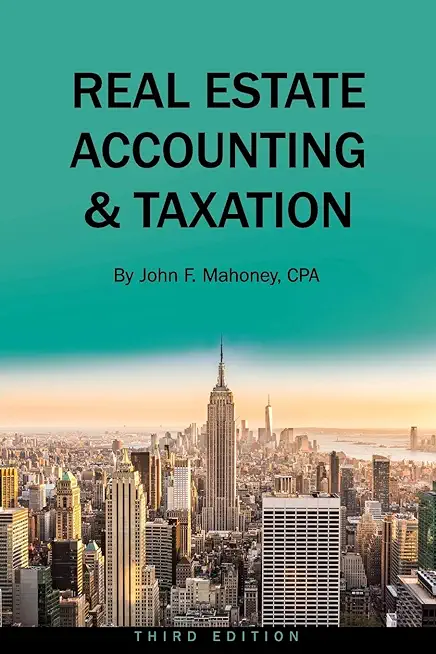
description
estate industry or those considering entering it, Real Estate Accounting and Taxation is a concise, informative introduction to tools used in certified public accounting practice when dealing with real estate entities.
Organized into ten chapters, the books addresses types of entities, key principles of real estate investing, limitations on loss deductions, and like-kind tax-free exchanges. There is also information on using ratio analysis and models for decision-making, long-term construction contracts, and synthetic leases. This revised second edition features a chapter on "T" account examples, and partnership and REIT accounting. Real Estate Accounting and Taxation also includes a real estate model worksheet that allows users to simulate a real estate transaction with the resulting before and after tax cash flow and the internal rate of return.
Real Estate Accounting and Taxation gives readers the practical knowledge they need to make the right decisions regarding real estate transactions. An ideal text for undergraduate and graduate business courses it is also an excellent general resource for building contractors, property managers, and real estate investors.
Organized into ten chapters, the books addresses types of entities, key principles of real estate investing, limitations on loss deductions, and like-kind tax-free exchanges. There is also information on using ratio analysis and models for decision-making, long-term construction contracts, and synthetic leases. This revised second edition features a chapter on "T" account examples, and partnership and REIT accounting. Real Estate Accounting and Taxation also includes a real estate model worksheet that allows users to simulate a real estate transaction with the resulting before and after tax cash flow and the internal rate of return.
Real Estate Accounting and Taxation gives readers the practical knowledge they need to make the right decisions regarding real estate transactions. An ideal text for undergraduate and graduate business courses it is also an excellent general resource for building contractors, property managers, and real estate investors.
A certified public accountant who currently manages his own CPA practice, John F. Mahoney is also an adjunct associate professor at New York University. He has served as controller and vice president of finance for various manufacturing, wholesale, and transportation companies, and helped in the preparation of the financial statements and tax returns of the Empire State Building. Professor Mahoney's course on financial statement analysis was featured in an article in the Wall Street Journal and he has appeared on GoodDay NY.
member goods
No member items were found under this heading.
listens & views

MUSIC & LYRICS BY CHARLES ...
by MUSIC AND LYRICS BY CHARLES BLOOM: IN HERE / VAR
COMPACT DISCout of stock
$16.75
Return Policy
All sales are final
Shipping
No special shipping considerations available.
Shipping fees determined at checkout.






